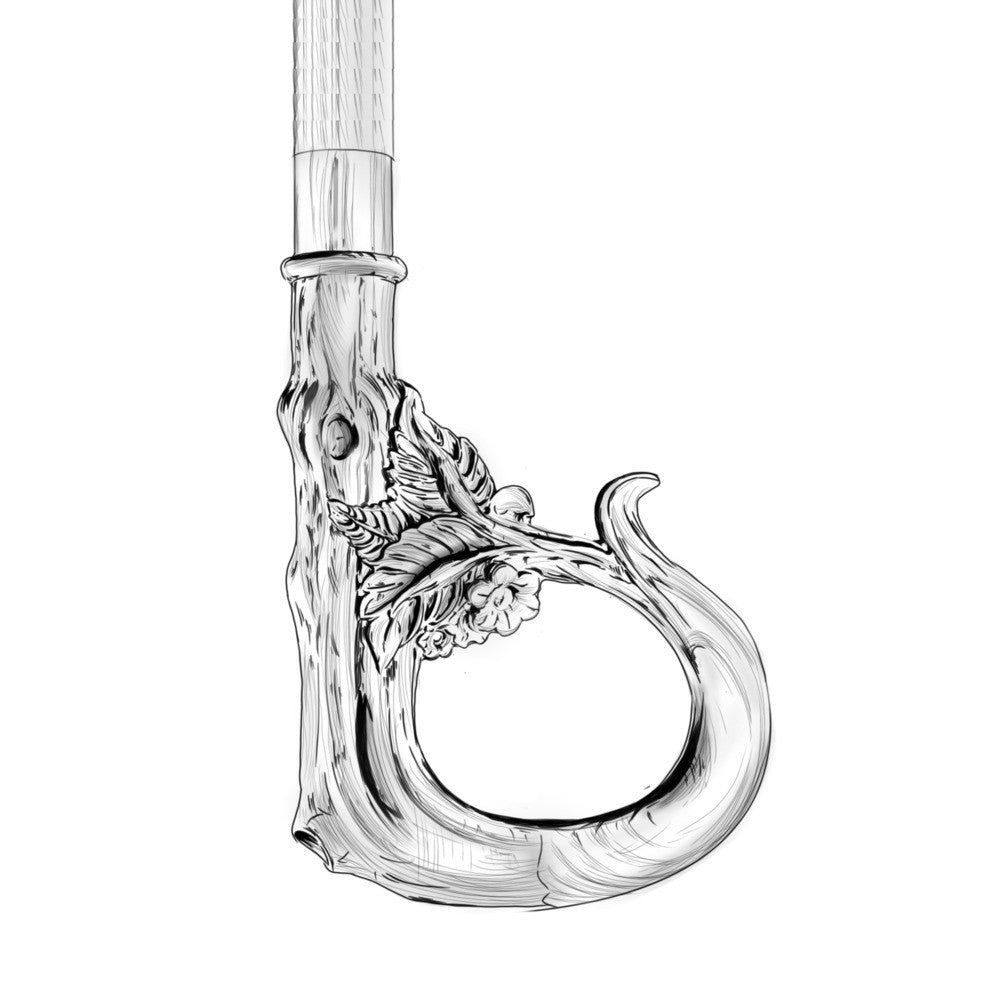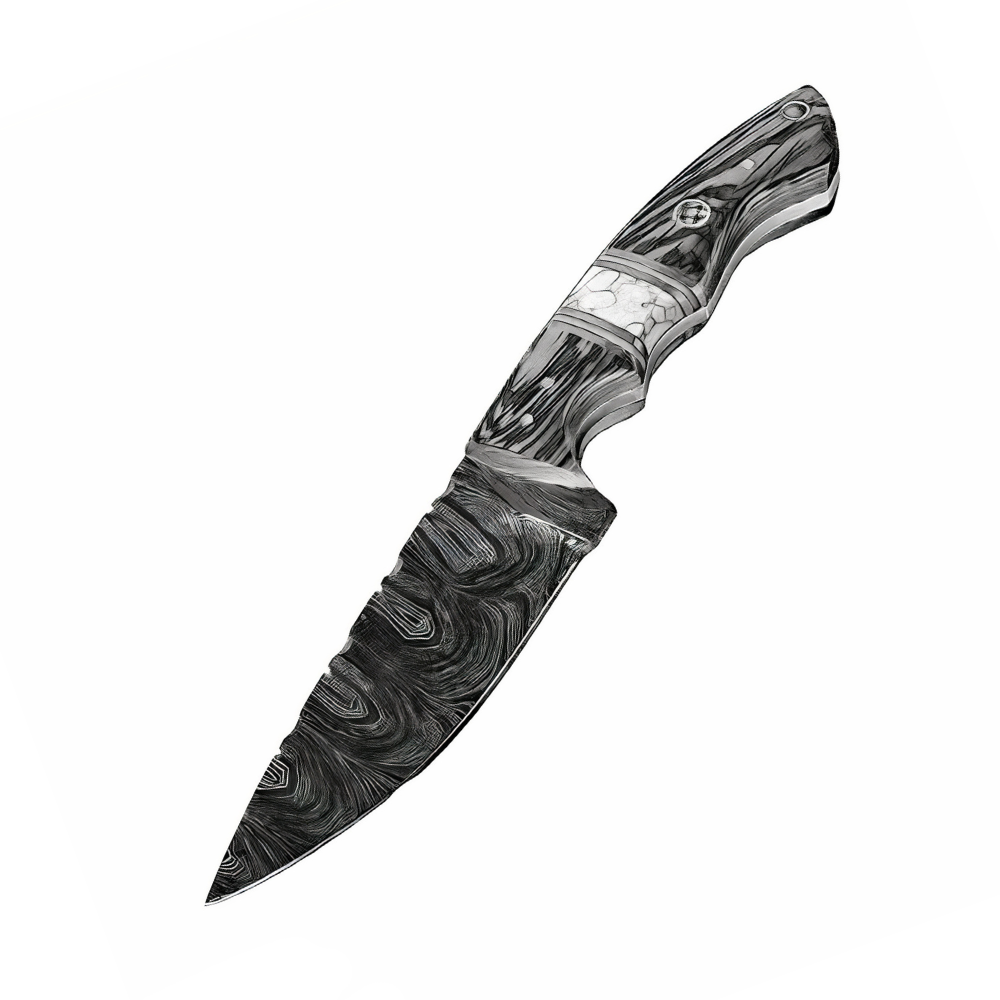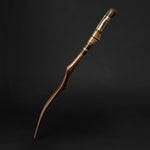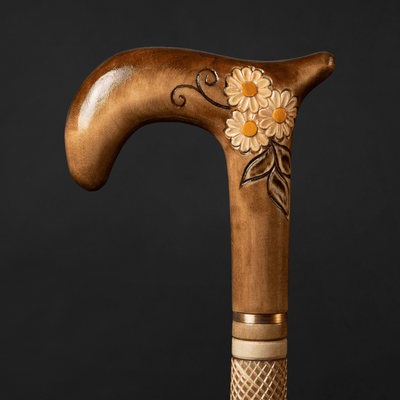You have no items in your shopping cart.
Recent Posts
-
The Art of Christmas Design: Walking Canes That Celebrate the Season in Style
-
How an Ergonomic Walking Cane Handle Prevents Hand and Wrist Strain?
-
How to Walk With a Cane Correctly to Avoid Back or Shoulder Strain?
-
5 Common Mistakes People Make When Buying a Walking Cane (and How to Avoid Them)
-
How to Choose a Walking Cane That Reflects Your Personality (Not Just Your Needs)?
-
Walking Canes That Match Formalwear for Weddings and Events
MOST POPULAR NOW
23
Apr
When it comes to mobility aids, a walking stick can make a significant difference in the lives of people with disabilities. Whether you have a chronic condition that affects your balance or you're recovering from an injury, a walking stick can provide the support you need to move around safely and comfortably. However, choosing the right walking stick is crucial, as it can affect not only your mobility but also your overall quality of life.
The best walking sticks for people with disabilities. A comprehensive guide
In this article, we'll explore the benefits of using walking sticks for people with disabilities and discuss the factors you should consider when choosing the right one.
Benefits of using walking sticks for people with disabilities
-
Increased stability and balance
For people with disabilities that affect their balance, walking sticks can provide much-needed stability and support. A walking stick can help distribute your weight evenly, reducing the risk of falls and injuries. Additionally, the extra support can give you the confidence you need to move around more freely and independently.
-
Reduced strain on joints
Walking sticks can also help reduce strain on your joints, particularly if you have arthritis or other conditions that affect your mobility. By taking some of the weight off your hips and knees, a walking stick can help relieve pain and discomfort, making it easier for you to move around comfortably.
-
Improved posture
Using a walking stick can also help improve your posture, particularly if you tend to lean to one side or have a hunched posture. By providing support and stability, a walking stick can help you stand up straighter, reducing strain on your back and neck muscles.

Factors to consider when choosing a walking stick
-
Height
The height of your walking stick is crucial for optimal support and balance. When standing upright, your walking stick should reach your wrist, with your elbow slightly bent. This ensures that you can maintain a comfortable and natural walking position without putting too much strain on your shoulder and arm muscles.
-
Material
Walking sticks come in various materials, including wood, aluminum, and carbon fiber. Each material has its own advantages and disadvantages, so it's essential to choose one that suits your needs and preferences. For example, wooden walking sticks are sturdy and durable, but they can be heavy and difficult to adjust. Aluminum walking sticks, on the other hand, are lightweight and easy to adjust but may not be as sturdy as wooden sticks.
-
Grip
The grip of your walking stick is crucial for comfort and support. A comfortable grip can reduce strain on your hand and wrist muscles and provide a secure hold, preventing slips and falls. There are various types of grips available, including foam, rubber, and cork, so it's essential to choose one that feels comfortable and secure in your hand.
-
Tip
The tip of your walking stick is also crucial for stability and balance. The tip should be made of a non-slip material that provides a firm grip on the ground, preventing slips and falls. Additionally, the tip should be replaceable and easy to change, so you can adjust it to different terrains and surfaces.
In conclusion, choosing the right walking stick is crucial for people with disabilities who rely on mobility aids to move around safely and comfortably. By considering factors such as height, material, grip, and tip, you can find a walking stick that suits your needs and preferences, providing you with the support and stability you need to maintain an active and independent lifestyle.
Types of walking sticks
Walking sticks have been used for centuries to assist people with mobility issues in getting around safely and comfortably. However, choosing the right walking stick is crucial to ensuring that you get the maximum benefits from it. The type of walking stick you choose will depend on your individual needs and preferences, as well as the specific condition you are dealing with.
There are several different types of walking sticks available on the market today, each with its own unique features and benefits. Some of the most common types include:
- Standard walking sticks: These are the most basic type of walking stick, often made from wood or metal. They come in a variety of heights and can be adjusted to fit your specific needs. Standard walking sticks are ideal for those who need a little extra support and stability when walking.
- Quad canes: These walking sticks have four legs at the base, making them more stable than standard walking sticks. They are often used by those who have balance issues and need additional support.
- Forearm crutches: These walking aids provide support from the forearm rather than the hand. They are often used by those who have limited hand strength or wrist problems.
- Platform crutches: These crutches have a wider base than standard crutches, providing additional stability and support. They are often used by those who have difficulty walking or standing for extended periods.
- Underarm crutches: These crutches are designed to fit under the arms, providing support to the upper body. They are often used by those who have difficulty putting weight on one or both legs.
- Hiking poles: These walking sticks are designed for use in outdoor environments and can provide additional stability and support when hiking on uneven terrain.
Benefits of using walking sticks for people with disabilities
Using a walking stick can provide numerous benefits for people with disabilities. Some of the most significant benefits include:
- Improved balance and stability: A walking stick can provide additional support and stability when walking, reducing the risk of falls and injuries.
- Reduced pain and fatigue: A walking stick can help distribute weight more evenly across the body, reducing pain and fatigue in the legs, hips, and back.
- Increased Independence: With the help of a walking stick, people with disabilities can regain their independence and mobility, allowing them to participate in daily activities more easily.
- Better posture: Using a walking stick can improve posture and reduce strain on the back and neck.
Choosing the right walking stick
When choosing a walking stick, it is important to consider your individual needs and preferences. You should also consult with a medical professional to ensure that you are using the right type of walking stick for your condition. A properly chosen and fitted walking stick can make a significant difference in your mobility and quality of life.
In conclusion, choosing the right walking stick is crucial for people with disabilities who want to improve their mobility and independence. With so many different types of walking sticks available, it is important to choose the one that is right for your specific needs. By doing so, you can enjoy all of the benefits that come with using a walking stick, including improved balance, reduced pain and fatigue, increased independence, and better posture.
Factors to consider when choosing a walking stick
When it comes to choosing the right walking stick, there are several important factors to consider. Here are the top five factors you should keep in mind:
-
Height and weight: It's crucial to choose a walking stick that fits your height and weight. A walking stick that is too short or too long can cause discomfort, and one that is not strong enough to support your weight can be dangerous. Make sure to choose a walking stick that is adjustable and can be customized to your specific needs.
-
Handle grip: The handle grip of your walking stick is also an important consideration. It's important to choose a handle grip that is comfortable and provides good support for your hand. Some common types of handle grips include foam, rubber, and wood.
-
Material: Walking sticks can be made from a variety of materials, including wood, metal, and plastic. Each material has its own set of advantages and disadvantages. Wood walking sticks are durable and aesthetically pleasing, while metal walking sticks are lightweight and strong. Plastic walking sticks are affordable and easy to clean.
-
Adjustability: As mentioned earlier, adjustability is key when it comes to choosing a walking stick. Make sure to choose a walking stick that is adjustable and can be customized to your specific needs. This will ensure that you can use the walking stick comfortably and safely.
-
Stability: Finally, you'll want to consider the stability of your walking stick. Choose a walking stick that is sturdy and provides good support. If you plan to use your walking stick on uneven terrain or for hiking, you may want to consider a hiking pole or a quad cane, which are specifically designed for those purposes.
By considering these five factors, you'll be able to choose the right walking stick for your needs. Whether you're looking for a standard walking stick, a quad cane, or a hiking pole, there are plenty of options available to choose from. Just remember to take your time and choose a walking stick that fits your specific needs and preferences.
Best walking sticks for specific disabilities
When it comes to mobility aids, walking sticks can be incredibly helpful for people with disabilities. Here are some of the best walking sticks for specific disabilities:
-
Arthritis: For people with arthritis, a walking stick with a cushioned grip can help to reduce pain and discomfort in the hands and wrists. Additionally, a walking stick with an adjustable height can help to reduce strain on the shoulders and back.
-
Cerebral palsy: People with cerebral palsy may benefit from using a walking stick with a quad base. A quad base provides added stability and support, which can be helpful for people with balance or coordination issues.
-
Multiple sclerosis: People with multiple sclerosis may benefit from using a lightweight walking stick with an ergonomic handle. An ergonomic handle can help to reduce strain on the hands and wrists, while a lightweight design can make it easier to use the walking stick for extended periods of time.
-
Parkinson's disease: People with Parkinson's disease may benefit from using a walking stick with a swivel base. A swivel base can help to reduce the risk of falls by providing added stability and support, while also allowing the user to turn and change direction more easily.
-
Stroke: People who have had a stroke may benefit from using a walking stick with a wider base. A wider base can provide added stability and support, which can be helpful for people who have difficulty with balance or coordination.
It's important to note that these are just general guidelines, and the best walking stick for a specific disability will vary depending on the individual's needs and preferences. If you have a disability and are considering using a walking stick, it's a good idea to consult with a healthcare professional to determine which type of walking stick will be most beneficial for you.

Accessories for walking sticks
When using a walking stick, there are several accessories that can be helpful in improving its functionality and convenience. Here are some common accessories for walking sticks:
-
Cane tips: Cane tips are rubber or plastic attachments that fit onto the bottom of a walking stick to provide added traction and stability. They can be especially useful when walking on slippery or uneven surfaces.
-
Wrist straps: Wrist straps attach to the handle of a walking stick and loop around the user's wrist, providing added security and preventing the walking stick from falling to the ground if the user loses their grip.
-
Carry bags: A carry bag can be a convenient accessory for a walking stick, especially if you need to transport it frequently. A carry bag can help to protect the walking stick from damage and make it easier to carry around when not in use.
By using these accessories, you can enhance the functionality of your walking stick and make it easier and safer to use. Be sure to choose accessories that are compatible with your specific walking stick model and needs.
How to use a walking stick correctly?
Using a walking stick can be a helpful tool in providing support and stability while walking. However, it's important to use the walking stick correctly to ensure maximum benefit and safety. Here are some tips on how to use a walking stick correctly:
-
Proper height adjustment: The first step in using a walking stick is to ensure that it is adjusted to the correct height. The top of the walking stick should be at the level of your wrist when your arms are hanging naturally at your sides. Adjust the height of the walking stick by loosening the locking mechanism and sliding the shaft up or down, then locking it back in place.
-
Correct hand placement: When using a walking stick, it's important to hold it correctly to ensure maximum support and stability. Hold the handle of the walking stick with your hand and rest the top of the stick on the ground at your side. Your elbow should be slightly bent, but not locked, when you hold the walking stick.
-
Walking techniques: When walking with a walking stick, start by placing the walking stick on the ground at the same time as your opposite foot. For example, if you are stepping forward with your right foot, place the walking stick on the ground at the same time. As you step forward with your left foot, bring the walking stick forward as well, planting it on the ground at the same time. This technique helps to provide maximum support and stability.
-
Stairs and curbs: When climbing stairs or curbs, hold the walking stick in your opposite hand and use the railing for support with your other hand. When going down stairs or curbs, hold the walking stick in the hand on the same side as the railing and use the walking stick for added support.
By following these tips, you can ensure that you are using your walking stick correctly and safely, providing maximum support and stability when walking.
Exercises to improve walking stick technique
Using a walking stick can be a helpful tool to improve your mobility and help you walk more comfortably. However, it's important to use the walking stick correctly and efficiently to ensure maximum benefit. One way to improve your walking stick technique is to perform exercises that focus on balance, strengthening, and stretching. Here are some exercises to consider:
-
Balancing exercises: Balance is key when using a walking stick, so practicing exercises that improve your balance can be very helpful. One effective exercise is the tandem stand, where you stand with one foot directly in front of the other and hold the position for several seconds. Another exercise is the single leg stand, where you stand on one leg for several seconds, then switch to the other leg.
-
Strengthening exercises: Strong muscles are essential for using a walking stick correctly and efficiently. One effective exercise is the leg press, where you sit on a chair and extend your legs straight out in front of you, then bring them back in. Another exercise is the calf raise, where you stand on your tiptoes, hold the position for several seconds, then lower your heels back down.
-
Stretching exercises: Stretching can help improve your flexibility and range of motion, which can be very helpful when using a walking stick. One effective exercise is the quad stretch, where you stand on one leg and lift the other leg behind you, bending the knee and holding onto your ankle. Another exercise is the hamstring stretch, where you sit on a chair and extend one leg out in front of you, reaching for your toes with your hands.
By incorporating these exercises into your daily routine, you can improve your balance, strengthen your muscles, and increase your flexibility and range of motion, which can all help improve your walking stick technique and make walking more comfortable and efficient.
Frequently Asked Questions
Q: Can a walking stick be used on stairs? A: Yes, a walking stick can be used on stairs. However, it's important to use caution and take things slowly. When ascending stairs, the walking stick should be placed on the step above before stepping up with the opposite foot. When descending stairs, the walking stick should be placed on the step below before stepping down with the opposite foot.
Q: Can a walking stick be used on uneven terrain? A: Yes, a walking stick can be very helpful on uneven terrain. The walking stick can provide additional stability and support, helping to prevent falls and injuries. However, it's important to choose a walking stick with a sturdy and slip-resistant tip for maximum effectiveness.
Q: Can a walking stick be used for weight-bearing after surgery? A: Yes, a walking stick can be a useful tool for weight-bearing after surgery or injury. However, it's important to follow your doctor's recommendations for weight-bearing and use the walking stick correctly to avoid further injury.
Q: Can a walking stick be used by someone with a visual impairment? A: Yes, a walking stick can be very helpful for someone with a visual impairment. A white cane with a red tip is a common type of walking stick used by people with visual impairments. The cane can help the person detect obstacles in their path and navigate their surroundings more safely.
Remember, using a walking stick can be a great way to increase mobility and independence for people with disabilities or injuries. It's important to choose the right walking stick for your needs and use it correctly to get the most benefit.
Conclusion
Walking sticks are an essential mobility aid for people with disabilities or those who need extra support while walking. Choosing the right walking stick can make a significant difference in mobility, balance, and overall quality of life. In this article, we have discussed various aspects of walking sticks, including types, factors to consider, best walking sticks for specific disabilities, top brands, accessories, how to use them correctly, and exercises to improve technique. Let's summarize the key points.
-
Types of walking sticks: standard walking sticks, quad canes, forearm crutches, platform crutches, underarm crutches, and hiking poles.
-
Factors to consider when choosing a walking stick: height and weight, handle grip, material, adjustability, and stability.
-
Best walking sticks for specific disabilities: arthritis - offset handle walking stick, cerebral palsy - quad cane or platform crutch, multiple sclerosis - forearm crutch or platform crutch, Parkinson's disease - offset handle walking stick or quad cane, stroke - forearm crutch or quad cane.
-
Accessories for walking sticks: cane tips, wrist straps, and carry bags.
-
How to use a walking stick correctly: proper height adjustment, correct hand placement, walking techniques, and stairs and curbs.
-
Exercises to improve walking stick technique: balancing exercises, strengthening exercises, and stretching exercises.
Now that we have discussed all the essential aspects of walking sticks, we can conclude that choosing the right walking stick is crucial for mobility, balance, and overall quality of life. It is essential to consider factors such as height and weight, handle grip, material, adjustability, and stability before choosing a walking stick. Also, specific disabilities require specific types of walking sticks. Proper use of walking sticks and exercises to improve technique can further enhance mobility and balance.
In conclusion, we recommend consulting with a healthcare professional before choosing a walking stick and always using it correctly to avoid injury. By considering all the factors and aspects discussed in this article, you can choose the best walking stick for your needs and improve your quality of life.
Also Purchased
-
Beige Walking Cane for Ladies Chamomile Flower, Wooden Walking Stick
Introducing our beautiful Beige Walking Cane for Ladies with Chamomile Flower, a Wooden Walking Stick that is hand carved and handmade, making it both pretty and unique. This walking cane...$79.50 -
Exotic Burl Wood Walking Cane – Fashionable Artisan Stick
A sculptural statement in deep, oceanic blue — this walking cane is more than a support accessory, it's wearable art. Meticulously hand-shaped from stabilized burl wood, the handle evokes the...$425.00 -
ArtWalkingSticks™ MAGIC Walking Cane, Handmade - Make to Order
This piece of art is created for those who value details. We make one of a kind, handcrafted wood and resin canes. Our Wooden Canes are completely unmatched in creativity....$430.00 -
Umbrella with Eagle Handle, Fashion Umbrella For Men
Make a bold and fashionable statement with our Umbrella with Eagle Handle - a unique and functional accessory designed for men. The striking eagle handle is the highlight of this...$325.00 -
Fashionable Lion Shoehorn Long Handle, Pearly Brown Shaft, Handmade
Introducing our Fashionable Lion Shoehorn, a handcrafted, long-handled shoe horn with a pearly brown shaft that's both stylish and practical. The intricate Lion design adds a touch of elegance to...$240.00 -
ArtWalkingSticks™ MAGIC Red Walking Cane - Unisex, Handmade
This piece of art is created for those who value details. We make one of a kind, handcrafted wood and resin canes. Our Wooden Canes are completely unmatched in creativity....$425.00
































